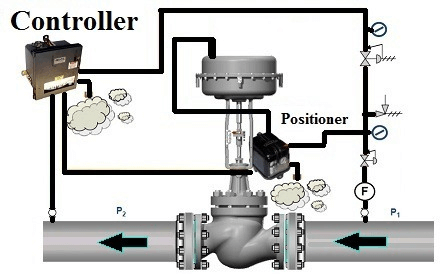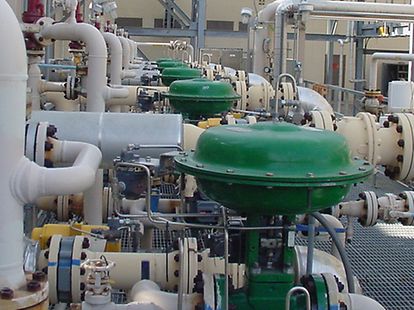Enhancing Operational Efficiency with Advanced Control Valves
Enhancing Operational Efficiency with Advanced Control Valves
Blog Article

Maximize Energy Financial Savings and Comfort With Advanced Building Automation Controls
In the world of modern design and center management, the combination of sophisticated structure automation controls stands as an essential development. By taking advantage of the power of automation, structures can adapt, react, and evolve in methods that were when unbelievable.
Energy Performance Advantages
Energy effectiveness benefits can substantially reduce energy consumption and operational costs in structures. By implementing energy-efficient practices and innovations, structure owners and drivers can achieve substantial cost savings while likewise contributing to environmental sustainability. Among the key advantages of improving energy effectiveness in structures is the decrease of energy costs. Energy-efficient systems, such as sophisticated building automation controls, can enhance using sources like heating, cooling, and lighting, resulting in lower energy expenses gradually.
In addition, improved power performance can lengthen the life expectancy of building equipment and systems. By running a lot more efficiently, HVAC systems, lighting fixture, and other structure elements experience much less deterioration, resulting in lowered upkeep and replacement costs. Additionally, energy-efficient buildings often regulate higher home worths and rental rates, giving long-lasting economic benefits to proprietors.
Moreover, power effectiveness can boost resident convenience and efficiency. Effectively controlled interior environments with ideal lighting and thermal problems develop a more conducive and pleasurable workspace, resulting in enhanced staff member contentment and performance. Generally, the power efficiency advantages connected with sophisticated structure automation controls are complex, including cost financial savings, environmental stewardship, and resident wellness.
Boosted Comfort Control
Enhancing convenience control in structure settings requires a sophisticated integration of advanced automation systems for optimum owner health. By using sophisticated building automation controls, centers can customize the indoor setting to satisfy the certain requirements and choices of passengers. control valves.
By integrating these advanced controls, structures can not just enhance convenience yet likewise enhance power efficiency by maximizing system operations based on real occupancy and usage patterns. Inevitably, focusing on resident convenience via advanced automation systems leads to an extra enjoyable and healthier indoor setting.
Operational Effectiveness Improvements

Additionally, the implementation of real-time tracking and analytics devices enables structure drivers to identify power inadequacies and operational anomalies quickly. By continuously keeping track of power use patterns and system efficiency metrics, adjustments can be made in real-time to enhance power intake and make certain peak operational effectiveness. control valves. In addition, including demand action methods into building automation controls can even more enhance functional effectiveness by dynamically readjusting energy use based upon grid conditions and prices signals
Indoor Environment Optimization
Reliable indoor environment optimization is a basic facet of visit this site structure automation controls, ensuring residents' convenience and well-being while taking full advantage of power cost savings. By making use of advanced sensing units and controls, building automation systems can constantly monitor and adjust temperature, moisture degrees, air quality, and ventilation to develop an optimal interior atmosphere. Maintaining regular and comfortable problems not only improves resident contentment but likewise boosts productivity and total wellness.
Interior climate optimization additionally plays an essential duty in power effectiveness. By fine-tuning air conditioning, heating, and ventilation systems based upon real-time data and occupancy patterns, developing automation controls can significantly lower power intake - control valves. For circumstances, implementing techniques such as demand-controlled air flow and thermal zoning can help minimize power waste while guaranteeing that each area of the structure obtains the required conditioning.

Lasting Atmosphere Development
Building automation regulates not just enhance indoor environment problems for power effectiveness and owner comfort but also lay the structure for developing a sustainable setting with critical monitoring of systems and sources. By integrating sophisticated structure automation technologies, such as sensors, actuators, and intelligent software application, facilities can change and keep track of power usage in real-time to decrease waste and decrease their carbon footprint. These systems enable predictive upkeep, recognizing potential issues prior to they escalate and enhancing devices performance to boost longevity and effectiveness.
Furthermore, sustainable environment production prolongs beyond energy administration to incorporate water conservation, waste reduction, and indoor air quality enhancement. Building automation controls can control water usage, discover leakages, and ensure correct waste disposal methods, contributing to general sustainability initiatives. Furthermore, by monitoring and controlling air flow and filtering systems, these technologies boost occupant wellness and efficiency my blog while lowering power intake related to a/c procedures.
Conclusion
In verdict, progressed building automation regulates deal significant benefits in terms of power financial savings, comfort control, functional performance, indoor climate optimization, and producing a lasting atmosphere. By executing these controls, buildings can achieve optimum performance while decreasing power usage and improving occupant convenience. It is evident that using sophisticated automation technology is crucial in enhancing building efficiency and developing a more sustainable future.
Energy efficiency advantages can dramatically lower power consumption and functional prices in structures. Generally, the energy effectiveness advantages connected with sophisticated structure automation controls are multifaceted, including cost savings, ecological stewardship, and occupant health.
Additionally, incorporating need feedback approaches right into building automation controls can better enhance operational effectiveness by dynamically readjusting energy usage based on grid problems and pricing signals.
Structure automation regulates not only enhance indoor environment conditions for energy effectiveness and occupant convenience however likewise lay the foundation for developing a sustainable environment via calculated administration of systems and sources.In final thought, progressed building automation controls deal significant benefits in terms of power savings, comfort control, functional performance, indoor climate optimization, and creating a lasting atmosphere.
Report this page